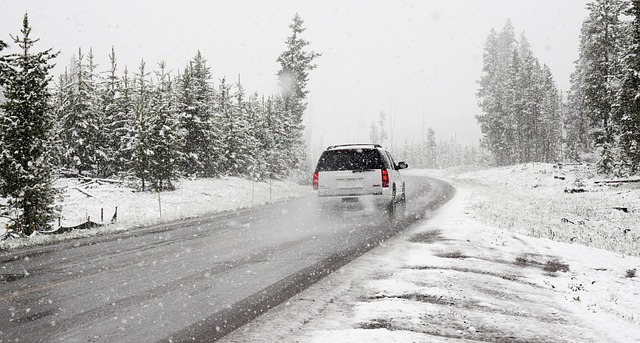Seasonal Tire Decisions for Santiago, Valparaiso, and Patagonia: Practical Guidance
Chile spans dry valleys, humid coasts, and subpolar plains, so one tire choice rarely suits every region or season. Drivers in Santiago face hot summers and occasional winter frost, Valparaiso sees frequent rain and salty air, and Patagonia brings extended cold with snow and ice. This guide explains tire types, wear, seasonal selection, and markings to help you choose confidently.

Chile’s geography compresses multiple climates into one long country, which means tire decisions change from city to coast to deep south. In central areas like Santiago, summers are hot and dry with brisk commutes on urban highways. Valparaiso’s steep streets and marine air make wet grip and corrosion resistance essential. Patagonia is a different equation entirely, with long, cold seasons, snow, and unsealed stretches that test traction and durability. The right approach blends tire type, maintenance, and timing of seasonal changes.
Tire Types and Usage
Tire types and usage vary by compound and tread design. Summer options prioritize dry and warm wet grip, shorter braking, and steering precision. All season models balance year round versatility, favoring moderate winters and heavy rain. Winter options use softer rubber and dense siping to preserve grip in cold, snow, and ice. For mixed pavement and gravel, all terrain or mud terrain patterns add cut resistance and durability, though they can be louder and less efficient on city roads.
For Santiago’s urban network, summer or quality all season models typically suit most daily driving, with attention to heat resistance and efficient rolling. Around Valparaiso and the central coast, prioritize wet braking ratings and hydroplaning resistance for rainy months. In Patagonia and Andean corridors, genuine winter options marked with the three peak mountain snowflake symbol are advisable in colder months, while robust all terrain patterns help on gravel segments outside deep winter. Always confirm the vehicle’s load needs and wheel size before choosing.
How Tire Wear Happens
How tire wear happens is a mix of abrasion, heat, and mechanical factors. Underinflation increases shoulder wear and heat buildup; overinflation accelerates center wear. Misalignment and worn suspension create uneven edges or cupping. Aggressive acceleration, hard cornering, and frequent potholes multiply stresses. Temperature swings affect compound hardness, so a summer compound run in cold conditions can stiffen and lose grip while wearing irregularly.
Central Chile’s heat can quicken wear on softer compounds during summer commuting. Valparaiso’s hills, stop start driving, and wet surfaces stress tread blocks and brakes. Patagonia’s gravel and colder roads can chip rubber and erode leading edges. Rotate every 8 to 10 thousand kilometers, check pressure monthly when tires are cold, and inspect tread depth. Many drivers replace at about 3 millimeters for wet performance and at about 4 millimeters on winter options for snow traction. Wear bars appear at roughly 1.6 millimeters, a common legal minimum in many places, but planning replacement earlier maintains safety margins.
Choosing Tires for Seasons
Choosing tires for seasons starts with local climate patterns. Santiago’s Mediterranean climate brings long dry summers and a cool, wetter winter period. Summer or capable all season options usually cover year round needs if you remain in the metro area. If you drive into the Andes during winter, consider a cold weather set with the 3PMSF symbol and carry approved traction aids when conditions demand them on high passes. Always follow posted requirements from road authorities.
Valparaiso and the coast experience frequent rain and salt laden air. Prioritize wet grip ratings, deep circumferential grooves, and silica rich compounds that keep flexibility in cooler rain. Regular rinsing helps reduce salt related corrosion on wheels and brake components. In Patagonia, conditions often justify a dedicated winter set from late autumn to early spring. In shoulder seasons or on mixed surfaces, all terrain patterns with siping offer a compromise, but when temperatures drop consistently near freezing, winter compounds remain the safer bet. If considering studded designs, confirm local rules before use and weigh potential road surface impacts.
Understanding Tire Markings
Understanding tire markings helps match a set to your vehicle and routes. A size like 205/55 R16 indicates section width in millimeters, aspect ratio, radial construction, and rim diameter in inches. The load index, such as 91, encodes the maximum supported load per tire, while the speed symbol, such as V, refers to the tested speed capability under defined conditions. Extra Load or XL indicates reinforced construction for higher loads.
Seasonal capability appears as M plus S for mud and snow, which signals a broad all season design, and the 3PMSF emblem, which means the tire met a standardized snow traction test. Sidewalls also show the production date in a four digit code, for example week and year. Newer stock is not always essential, but very old rubber hardens over time. Some models list traction and temperature grades that can help compare wet braking and heat resistance. Always ensure the chosen load index and speed symbol meet or exceed the vehicle’s specifications.
Conclusion Across Chile, one size rarely fits all. Santiago drivers benefit from heat resistant, efficient choices for long dry months. Valparaiso’s coastal roads reward strong wet grip and corrosion aware maintenance. Patagonia demands winter ready compounds and rugged construction for snow, ice, and gravel. Combining suited types, mindful maintenance, and attention to markings helps match your vehicle to the varied conditions you face in your area.




